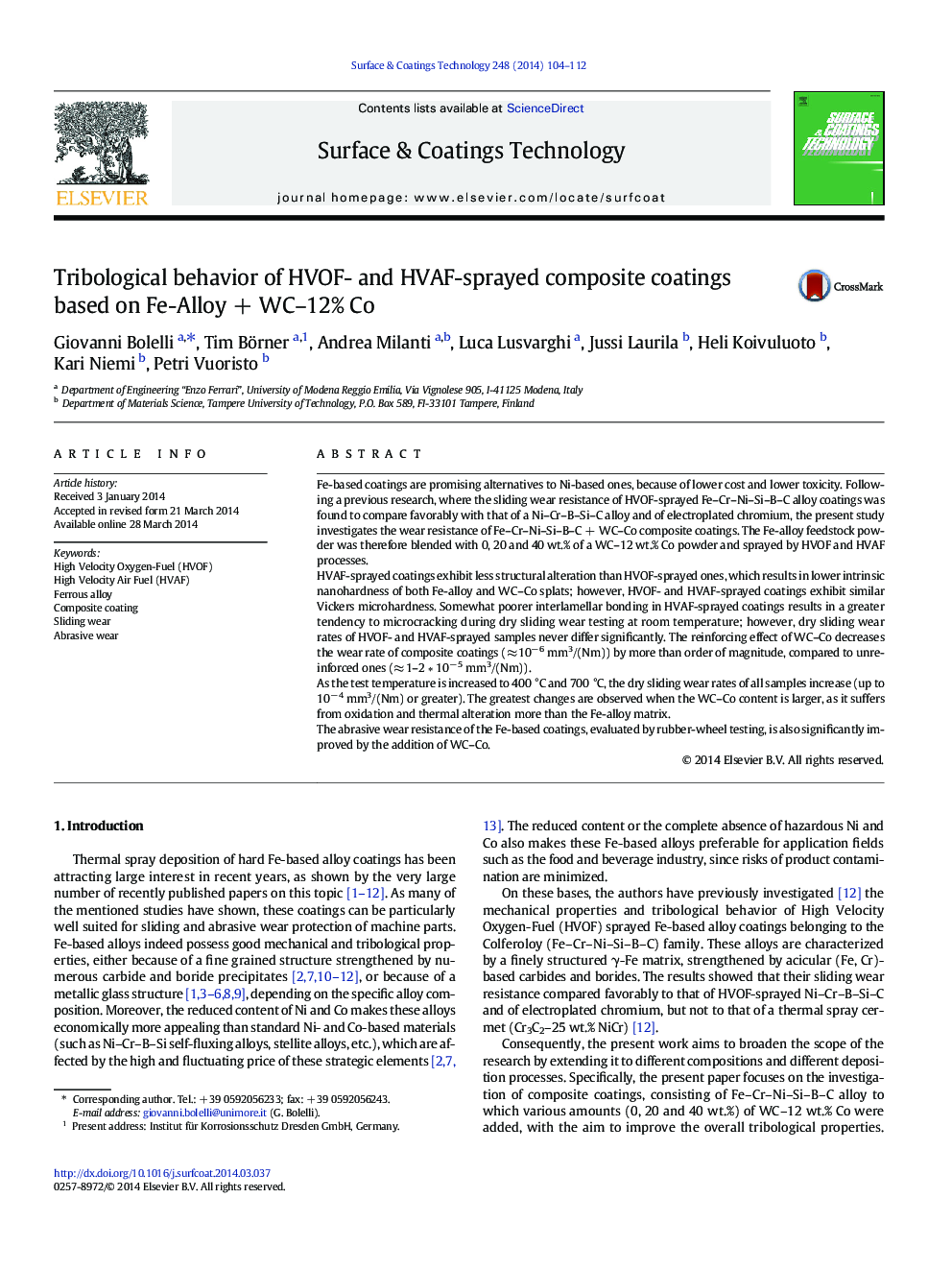| Article ID | Journal | Published Year | Pages | File Type |
|---|---|---|---|---|
| 1657560 | Surface and Coatings Technology | 2014 | 9 Pages |
•WC–Co enhances the sliding and abrasive wear resistance of Fe-alloy coatings at RT.•HVOF and HVAF coatings exhibit similar performances in sliding and abrasive wear.•The strengthening effectiveness of WC–Co at high temperature is impaired by oxidation.•Interlamellar microcracking occurs during sliding wear of HVAF coatings at RT.•At high temperature, abrasive grooving always dominates; microcracking is suppressed.
Fe-based coatings are promising alternatives to Ni-based ones, because of lower cost and lower toxicity. Following a previous research, where the sliding wear resistance of HVOF-sprayed Fe–Cr–Ni–Si–B–C alloy coatings was found to compare favorably with that of a Ni–Cr–B–Si–C alloy and of electroplated chromium, the present study investigates the wear resistance of Fe–Cr–Ni–Si–B–C + WC–Co composite coatings. The Fe-alloy feedstock powder was therefore blended with 0, 20 and 40 wt.% of a WC–12 wt.% Co powder and sprayed by HVOF and HVAF processes.HVAF-sprayed coatings exhibit less structural alteration than HVOF-sprayed ones, which results in lower intrinsic nanohardness of both Fe-alloy and WC–Co splats; however, HVOF- and HVAF-sprayed coatings exhibit similar Vickers microhardness. Somewhat poorer interlamellar bonding in HVAF-sprayed coatings results in a greater tendency to microcracking during dry sliding wear testing at room temperature; however, dry sliding wear rates of HVOF- and HVAF-sprayed samples never differ significantly. The reinforcing effect of WC–Co decreases the wear rate of composite coatings (≈ 10− 6 mm3/(Nm)) by more than order of magnitude, compared to unreinforced ones (≈ 1–2 ∗ 10− 5 mm3/(Nm)).As the test temperature is increased to 400 °C and 700 °C, the dry sliding wear rates of all samples increase (up to 10− 4 mm3/(Nm) or greater). The greatest changes are observed when the WC–Co content is larger, as it suffers from oxidation and thermal alteration more than the Fe-alloy matrix.The abrasive wear resistance of the Fe-based coatings, evaluated by rubber-wheel testing, is also significantly improved by the addition of WC–Co.
